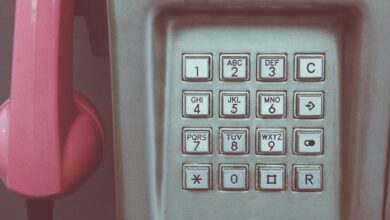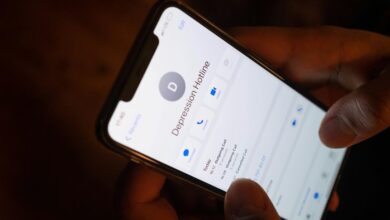Who Contacted You Recently? 3295738332, 3299563266, 3302485241, 3305350815, 3312078091, 3313980960

The recent surge in unknown calls, such as those from numbers 3295738332, 3299563266, 3302485241, 3305350815, 3312078091, and 3313980960, raises important concerns about telemarketing and potential scams. Identifying the source of these calls is essential for personal safety and privacy. Understanding the common scenarios behind such communications can provide clarity. Yet, the question remains: how should one effectively respond to these unidentified voices?
Understanding Unknown Numbers
How can one effectively discern the intentions behind unknown numbers?
Employing unknown caller etiquette is crucial. Individuals should utilize a phone number lookup service to assess the legitimacy of the call.
Common Scenarios for Receiving Unknown Calls
Unknown calls can arise from various scenarios, each with different implications for the recipient.
Commonly, these calls emerge from telemarketing tactics aimed at selling products or services, driven by caller motivations such as profit generation.
Additionally, unknown numbers may represent scams or legitimate inquiries, creating uncertainty for individuals.
Understanding these contexts can empower recipients to make informed decisions regarding their responses to such calls.
How to Identify the Caller
Determining the identity of a caller can be a complex task, particularly when the number is unrecognized. Utilizing caller identification techniques, individuals can employ reverse phone lookup services to gather information about the caller.
| Technique | Description | Example |
|---|---|---|
| Reverse Phone Lookup | Identify caller via database | Online lookup services |
| Caller ID Apps | Smartphone applications | Truecaller, Hiya |
| Social Media Search | Investigate through profiles | Facebook, LinkedIn |
Steps to Take When Receiving Suspicious Calls
When faced with a suspicious call, it is important for individuals to take a methodical approach to assess the situation.
First, refrain from providing personal information.
Next, engage in caller verification by asking specific questions or requesting a callback.
Document the call details for future reference.
Finally, consider reporting the incident to relevant authorities to contribute to broader awareness and prevention efforts.
Protecting Yourself From Unwanted Communications
Many individuals encounter unsolicited communications that can disrupt their daily lives and invade their privacy.
To safeguard against these intrusions, one should consider the following:
- Adjust privacy settings on devices and apps.
- Familiarize oneself with communication etiquette.
- Use call-blocking features actively.
- Screen unknown numbers before responding.
These strategies empower individuals, granting them greater control over their personal interactions and preserving their freedom from unwanted disturbances.
Reporting Unwanted Calls and Messages
Reporting unwanted calls and messages is a critical step in managing communication disruptions.
By identifying patterns associated with spam calls, individuals can provide relevant information to authorities, facilitating more effective responses.
Additionally, blocking unwanted numbers serves as an immediate measure to reduce further intrusions.
Identify Spam Call Patterns
Spam calls and messages have become a pervasive issue, characterized by distinct patterns that can be identified through careful analysis.
Understanding spam call trends is essential for effective communication. Utilizing caller identification techniques can help mitigate this problem.
Key patterns include:
- Frequent use of similar area codes
- Repetitive caller numbers
- Urgent messages requesting action
- Offers that seem too good to be true
Reporting to Authorities
Recognizing spam call patterns allows individuals to take proactive measures against unwanted communications.
Engaging in reporting procedures can empower citizens to address these disturbances effectively. It is essential to document details and use authority contacts, such as local consumer protection agencies or telecommunications regulators, to report incidents.
This action not only aids personal relief but also contributes to broader efforts in combating spam-related issues.
Blocking Unwanted Numbers
Taking decisive action against unwanted calls and messages involves blocking specific numbers that repeatedly intrude upon personal communication.
Effective blocking tactics enhance number management and restore peace. Individuals can take the following steps:
- Utilize phone settings to block numbers.
- Report unwanted calls to authorities.
- Use call-blocking apps.
- Regularly review and update blocked lists.
These methods empower users to reclaim their communication freedom.
Conclusion
In a world increasingly dominated by digital communication, receiving unknown calls can feel akin to navigating a dense fog—visibility is limited, and potential hazards lurk unseen. Just as a cautious traveler relies on a compass to discern safe paths, individuals must employ tools like reverse phone lookups to clarify the origin of mysterious calls. By taking proactive measures and remaining vigilant, one can effectively steer clear of the pitfalls associated with telemarketing and scams, ensuring personal safety in this uncertain landscape.




